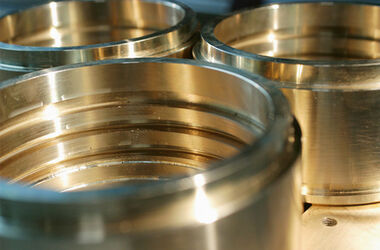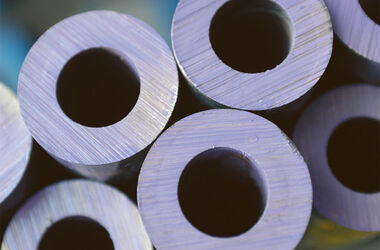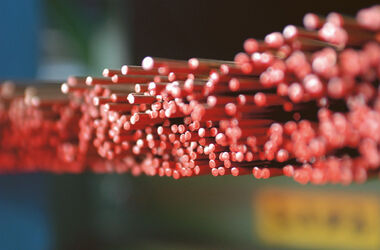| Alloy | Density approx. | Composition in % | Important tempers | Tensile Strength Rm N/mm2 | Yield Stress Rp0,2 N/mm2 | Elongation A % | |
|---|---|---|---|---|---|---|---|
| CuBe2 DIN EN 12163 - 167 12420 1652 1654 | CW101C | 8,3 | Be 1,8 - 2,1 Cu bal. |
Bars M R580 R600 R650 | ≥ 580 ≥ 600 ≥ 650 | (ca. 450) (ca. 480) (ca. 500) | ≥ 10 ≥ 10 ≥ 8 |
Comparable Specifications: | |||||||
| CuCo1Ni1Be DIN EN 12420 1652 | CW103C | 8,8 | Co 0,8 - 1,3 Ni 0,8 - 1,3 Be 0,4 - 0,7 Cu bal. |
Bars M R680 | ≥ 680 | ≥ 550 | ≥ 10 |
Comparable Specifications: | |||||||
| CuCo2Be DIN EN 12163 - 167 12420 1652 1654 | CW104C | 8,8 | Be 0,4 - 0,7 Co 2,0 - 2,8 Cu bal. |
Bars M R680 | ≥ 680 | ≥ 550 | ≥ 10 |
Comparable Specifications: High strength values when cured. Good temperature resistance. Higher electrical and thermal conductivity and slightly lower hardness and strength values as compared to Cu Be2. Hard-wearing. Electrodes for electrical resistance welding or at high welding pressures. | |||||||
| CuCr1Zr DIN EN 12163 12166 12420 | CW106C | 8,9 | Cr 0,5 - 1,2 Zr 0,03 - 0,3 Cu bal. |
Bars M R370 R430 R470 | ≥ 370 ≥ 430 ≥ 470 | ≥ 250 ≥ 350 ≥ 420 | ≥ 16 ≥ 10 ≥ 8 |
Comparable Specifications: Very high electrical and thermal conductivity at medium strength values. High softening temperature, long life. Electrodes for resistance welding. | |||||||
| CuNi2Si DIN EN 12163 - 167 12420 12449 1652 1654 | CW111C | 8,8 | Ni 1,6 - 2,5 Si 0,4 - 0,8 Cu bal. |
Bars M R550 R600 R640 | ≥ 550 ≥ 600 ≥ 640 | ≥ 430 ≥ 520 ≥ 590 | ≥ 15 ≥ 10 ≥ 10 |
Comparable Specifications: Combines relatively high strength values with relatively good electrical conductivity when cured. Excellent temperature resistance at low and high temperatures up to approx. 450 °C. High wear resistance and corrosion resistance, good sliding properties. Fixing parts that must be corrosion-resistant and have good conductivity. Highly stressed bearing bushings, pressure discs and slipways. Shipbuilding, marine engineering and apparatus engineering. | |||||||
| CuTeP DIN EN 12164 | CW118C | 8,9 | Te 0,4 - 0,7 P 0,003 - 0,012 Cu bal. |
Bars M R250 | ≥ 250 | ≥ 180 | ≥ 7 |
Comparable Specifications: Very good electrical conductivity (min. 50 m/Ω · mm2 at 20 °C). Very good machinability, good cold compressibility and very good heat compressibility. Weldable and hard solderable. Use for automatic turned parts amongst others. | |||||||





